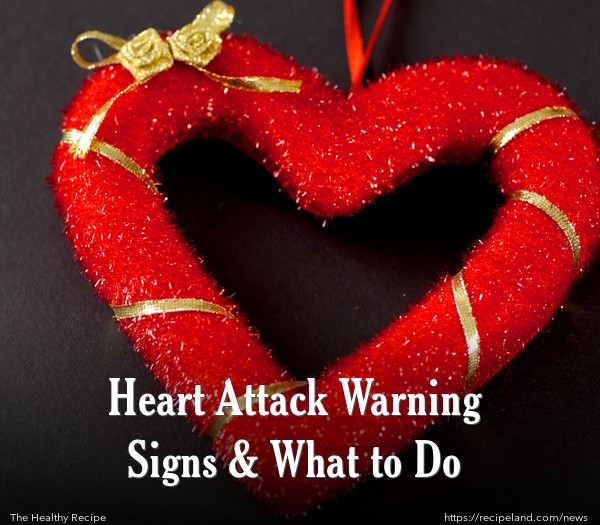A heart attack (also known as myocardial infarction) happens when the heart is not getting enough blood pumped to it, resulting in damage to the heart. This may be caused by a blockage in a blood vessel.
There are usually common symptoms that are experienced during a heart attack. Knowing these heart attack warning signs can help you save your own or another person’s life.
Although some heart attacks can be sudden and fatal before help arrives, the majority of people who suffer from heart attack experience similar symptoms – which they may not even recognize as symptoms.
1) Any chest pressure, pain, fullness, squeezing or pain that lasts for several minutes – or comes and goes – is a common sign of a heart attack.
2) Discomfort or pain can also be felt in the arms, stomach, back, neck or jawline. This is sometimes called radiating pain because heart attack sufferers can feel a pain shooting down one of their arms or other areas of the upper body.
3) Another heart attack symptom is shortness of breath, feeling winded – as though you can’t get a good deep breath, or just ran a marathon.
4) Other symptoms can include feeling lightheaded (or dizzy), vomiting or nausea, and showing signs of a cold sweat – when the person is sweating but cool or cold to the touch.
5) Heart attack symptoms in women may not be as severe as those seen in men. Angina – or chest pain – is often the only symptom that women experience. They are also more likely to feel lightheaded and nauseated.
Many women only feel tightness in their chest, or pain in their back, along with the feeling of being short of breath. Because of more mild symptoms generally experienced by women, it is especially important for them to seek medical attention to rule out a heart attack.
Any one of these symptoms, and definitely a combination of several of them, means that you must act quickly.
If you are alone and experiencing intense chest pain or pressure, call 911, or your local EMS (emergency medical service) responders, immediately.
Never try to drive yourself to the doctor or hospital.
If you are with someone who you suspect is having a heart attack you also want to call EMS instead of driving the person to the hospital yourself.
As soon as an ambulance arrives, medical first responders can give the heart attack patient life-saving support on the scene, long before arriving at the hospital.
If the heart attack is severe enough to cause cardiac arrest (when the heart’s electrical system stops working) and death, EMS can restart the heart with CPR and an AED.
An AED is an automated external defibrillator that reads the hearts electrical signals and will shock the heart back into a normal rhythm, saving the patient from death.
If you witness someone collapse or suspect that they are suffering from a heart attack, call for an ambulance. If in a public place such as a school, university or shopping mall, there may be an AED on site.
If the suspected heart attack victim is unresponsive or has stopped breathing, start CPR while someone else locates the AED if possible. If the person is in cardiac arrest, they only have about three minutes before their heart can no longer be resuscitated.
Once the AED box is opened, it will give you verbal instructions on how to continue CPR, where to place electrode pads on the victim’s torso, and it will only shock the patient if they really are in cardiac arrest.
Most cardiac arrests can be avoided if we know the warning signs and symptoms of heart attacks and seek immediately medical help.










Comments